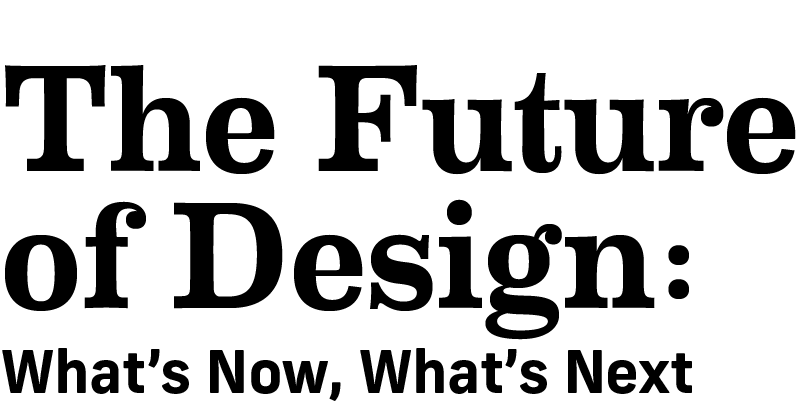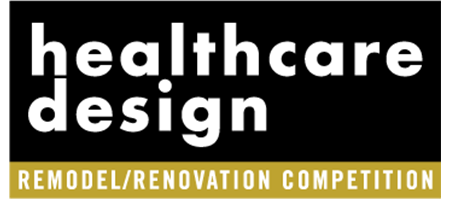HCD Rising Star: Jay Patel, associate in architecture, TVS
Jay Patel earned his Bachelor of Architecture from Nirma University (Ahmedabad, Gujarat, India) and a master’s degree from New York Institute of Technology (Manhattan, N.Y.). As a student, he completed internships and apprenticeships at architecture firms in both India and New York and has worked as a freelance architect in India since 2019. In 2021, he joined Pomarico Design Studio (Newburgh, N.Y.) as an architectural designer before moving to TVS (Atlanta) in 2023, where he serves as an associate.
In just four years as an architect in healthcare design, Patel has contributed to at least 15 major projects totaling more than 1.2 million square feet. He says his work is rooted in rigorous research and driven by data, blending an analytical approach with empathy and a focus on sustainability.
For the Fulton County Behavioral Health Crisis Center in Atlanta, he analyzed patient flow and clinical workflows to inform calming, light-filled spaces that are designed to reduce patient agitation and improve care delivery. Currently on his desk is a $22 million renovation and expansion for Grady Memorial Hospital’s Burn Center in Atlanta, where he’s overseeing medical planning and design documentation to deliver trauma-informed layouts that balance clinical efficiency with patient comfort.
While working at Pomarico Design Studio on a 400-acre master plan for Gaylord Specialty Healthcare in Wallingford, Conn., Patel developed a “Healing Communities” framework, an evidence-based approach that integrates Hospital Consumer Assessment of Healthcare Providers and Systems data, sustainability, and patient feedback. The planning model is influencing TVS’s approach to rehabilitation design, emphasizing adaptable environments that evolve with patient needs.
Across his project work, Patel aims to bridge innovation and evidence-based design to enhance patient care and operational performance, helping shape firm-wide practices and broader conversations in the healthcare design community.
Path to healthcare design: Honestly, it wasn’t love at first sight! I’ve always been driven by a deep desire to help people and strengthen communities, but I knew the clinical path wasn’t for me. Architecture became my creative outlet. After completing my master’s degree, I gravitated toward education and healthcare design as a way to give back meaningfully.
My first role happened to be in healthcare, and, initially, I was overwhelmed. The specialized terminology and regulations felt foreign compared to my academic training—I even questioned if I belonged. But persistence changed everything. As I immersed myself, translating complex needs into healing spaces, I discovered the profound impact design has on vulnerable lives.
Witnessing how thoughtful environments can ease anxiety, support exhausted staff, and improve outcomes transformed my initial frustration into a deep, enduring passion. That journey—from uncertainty to purpose—is what truly drew me in and keeps me committed.
Describe your design approach: People-centric healing: Design of people, by people, for people.
On your desk now: I’m currently leading construction administration for the $22 million Grady Memorial Hospital Ingram Burn Center expansion and renovation, set to be completed early next year. This isn’t just bricks and mortar—it’s about enhancing a nationally recognized facility for burn patients.
My role includes spearheading client collaboration to refine program needs, overseeing medical planning, and ensuring design documentation supports healing at every level. The project features state-of-the-art operating rooms, intensive care unit (ICU) rooms, hydrotherapy areas, and staff support zones. Guiding this transformation and knowing these spaces will directly impact recovery during some of life’s hardest moments is both an immense responsibility and a deeply rewarding privilege.
Most rewarding project to date: Leading the design of a 21,884-square-foot emergency department expansion at Hackensack Meridian Health – Palisades Medical Center in North Bergen, N.J. while at Pomarico Design Studio remains one of my most rewarding experiences. This was my first leadership role and a chance to push boundaries, such as introducing a 40-square-foot low-acuity treatment module. Designing triage, behavioral health zones, rapid assessment bays, and diagnostics wasn’t just technical; it was research-driven and purpose-focused.
Knowing this design increases annual capacity by more than 2,250 patients and enhances efficiency per treatment space was powerful. It reduced wait times, created calmer environments, and better supported frontline staff. Seeing research turn into tangible impact reaffirmed the power of thoughtful healthcare design.
What success means to you: True success in healthcare design goes beyond aesthetics or meeting codes. It crystallizes when the space works seamlessly for the people inside it.
It’s when a patient feels unexpectedly calm in a stressful situation, or when staff say the environment genuinely eases their workflow. It’s about navigating the complex constraints—clinical needs, budgets, regulations—not as roadblocks but as creative boundaries that lead to human-centered solutions. When design becomes an invisible partner in both healing and caregiving—quietly fulfilling needs and lifting burdens—that’s success.
Industry challenge on your radar: A major challenge we must face is strategically integrating artificial intelligence (AI) to manage healthcare’s labyrinth of codes and requirements—without losing human-centered design. AI holds tremendous potential to streamline code compliance and optimize workflows. But the risk is real: replacing empathy with automation.
Our challenge is to develop AI tools that relieve us from tedious tasks, freeing up space for meaningful, patient-focused creativity. Another focus is safeguarding the irreplaceable human element and ensuring AI informs, but never dictates, design decisions grounded in empathy and deep listening. Proactively addressing this means using technology to enhance—not replace—the human heart of healthcare design.
Find updates and additional information on the 2025 HCD Conference + Expo here.
Click here to read more about all of HCD’s 2025 Rising Stars.












